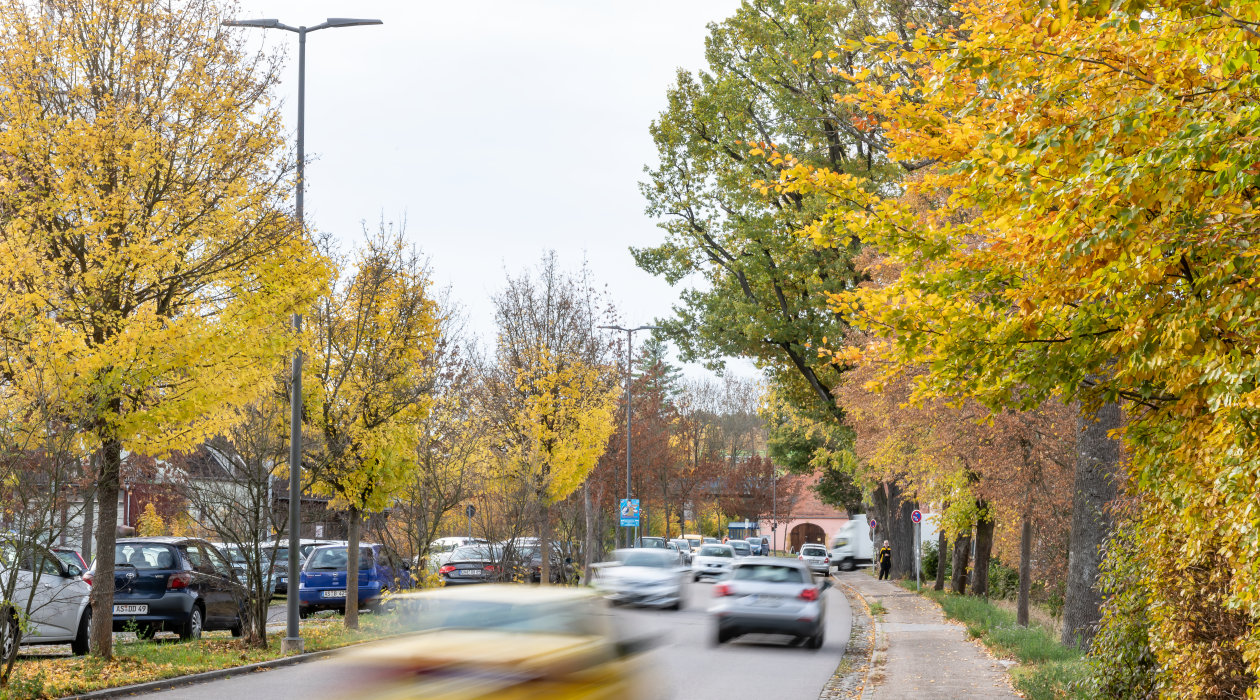Streetlight 11 provides efficient street lighting with low energy costs and the best environmental protection
City of Sulzbach-Rosenberg, Germany
The city of Sulzbach-Rosenberg wants to convert 90 percent of its public lighting to LED by 2020. With 550 new Streetlight 11 luminaires from Siteco, they have already taken a major step toward reaching that goal – and made a positive contribution to traffic safety, municipal coffers and nature. Funding from the Federal Ministry for the Environment (BMU) makes this modernization twice as attractive.
Details:
Category: Street & Urban
Technology/Services:
Luminaires
Year: 2019
Consistent modernization of street lighting since 2012
“Surrounded by rolling hills“ – is how the City of Sulzbach-Rosenberg promotes itself on its website. The “Ducal town with flair” with its 20,000 residents is situated in the middle of the Upper Palatinate, some 80 kilometers north of Regensburg and 50 kilometers east of Nuremberg. Tranquil? Perhaps. Sleepy? Not at all. When it comes to public lighting and its switch to efficient LED solutions, Sulzbach-Rosenberg is a good step ahead of other cities.
“We have been making the switch to LED for years,” says Roland Segerer, electrical engineer at the city. In 2012, it first applied for funding from the Federal Ministry for the Environment (BMU) to modernize its lighting. This was when the Streetlight 10 from Siteco made its way into the city in the Upper Palatinate region. They replaced the oldest lights in the main traffic sectors, which were still outfitted with HQL mercury vapor lamps.
Throughout 2018, the 20 year old lights were then replaced in parks, residential and collector streets. The solution of choice: 550 units of the Streetlight 11 from Siteco. It is the successor model to the Streetlight 10 but with a similar, slightly modified design and even more efficient technology behind it. The Power version in the micro size was used for park paths and the mini used for residential and collector streets with mounting heights between 5 and 9 meters.
70 percent less energy consumption, 50 percent lower electricity costs
In order to receive BMU funding for this modernization step, the city had to achieve 70 percent savings in CO2. with its new street lights. “We were easily able to achieve that with the Streetlight 11,” says Peter Schmidt, applications expert for exterior lighting at Siteco.
While previous HQL lamps had an output of 89 or 137 watts, the efficient Streetlight 11 in the Plus version has just 14 and 60 watts, depending on size and lumen package. The same is true with the replaced linear luminaires with fluorescent tubes that used significantly more energy (2 x 44 watts).
Along with the efficiency of the LED luminaires themselves, the municipality is generating additional savings potential with the option of night-time setback. “We start by dimming to 80 percent of the light current and reduce it to 50 percent over the course of the night,” explains Segerer. As a result, Sulzbach-Rosenberg pays just half of the electricity costs compared to before the upgrade – and that despite rising electricity prices and additional lighting installed in new residential areas.
LED street lights without light pollution
The modernization benefits not only the municipal coffers, but the environment as well. The upgrade also involved replacing lights on existing mast poles in the downtown area. “The masts have an incline of just over 13°. This means that light is emitted upward,” says Peter Schmidt. Light pollution in the night sky is the result. But: With the adjustable mast mounting element of the Streetlight 11, we could remove the incline so that light is only emitted in the lower half,” says Schmidt. Light immission is therefore close to zero. At the same time, the minimal blue components in the LED light attract much fewer nighttime inspects.
The mast poles presented a challenge in terms of both environmental protection and lighting technology. The problem: This type of mast has arms that extend into the street by about two meters. “This means the road surface is well illuminated. But we need light for the sidewalk, too,” explains Schmidt. Siteco developed a special light distribution specifically for these cases. Three of the four elements of the LED module illuminate the street, while one element turns the light back to the mast and onto the sidewalk – for a homogeneous light without dark spots. It is made possible by precise reflector technology that enables the Siteco luminaire to direct targeted light.
Smooth start-up of new street lighting
Even with all the technical features – what ultimately convinced Roland Segerer was the day-to-day work with the luminaire. Together with just one colleague, he is responsible for all installations, conversions and adjustments. Uncomplicated solutions that are easy to mount and program are therefore essential for him. “The best part is that we can parameterize the Streetlight 11 easily and completely according to our needs,” says the electrical engineer.
Especially because Sulzbach-Rosenberg has much more in store. The next modernization step for 2019 is already planned: It calls for replacement of NAV sodium vapor lamps, the more efficient of the “old” technologies, mainly used in newer residential areas and spotlights that illuminate several historic buildings and facades. The municipality wants to convert at least 90 percent of the city's exterior lighting to LED by 2020.








